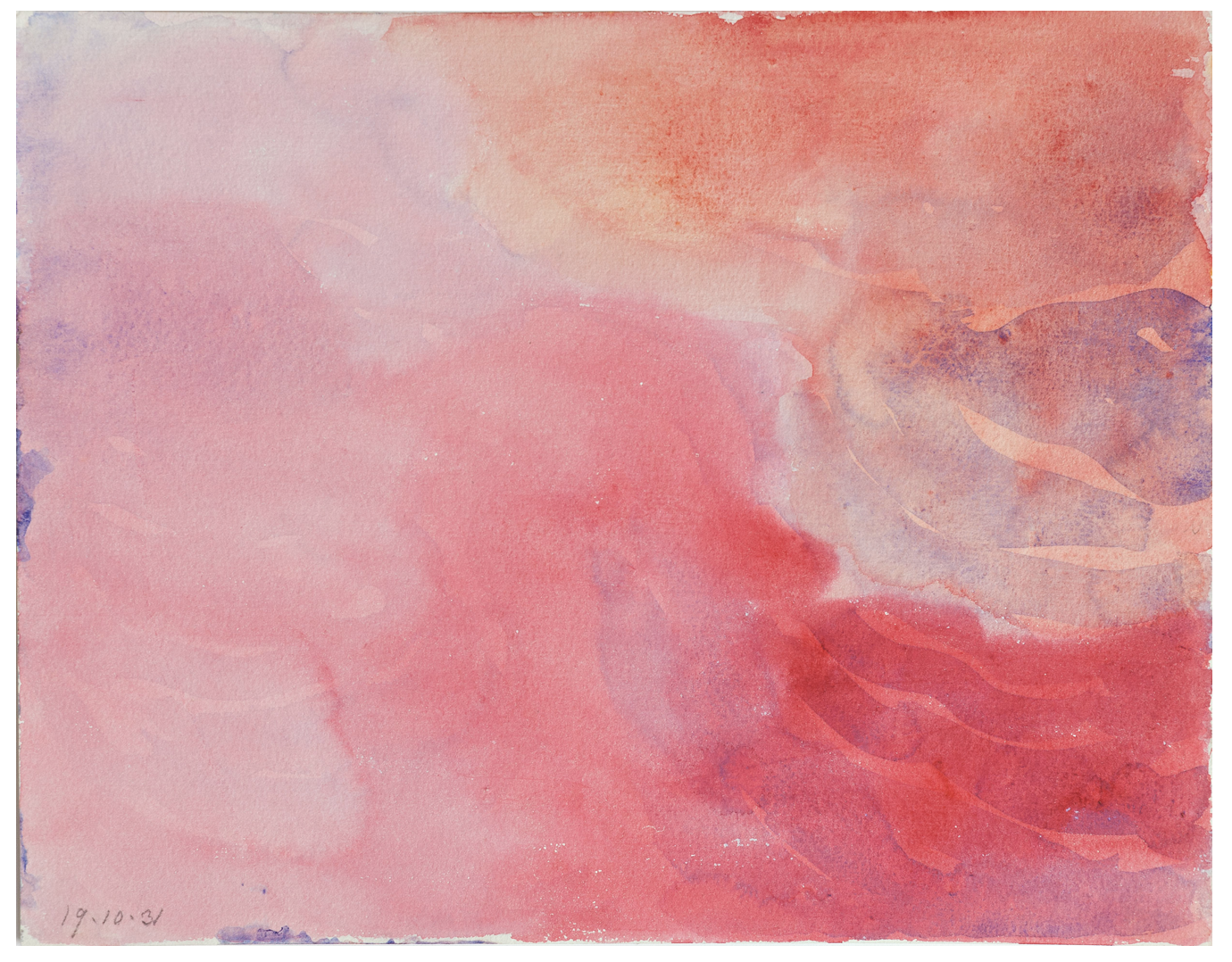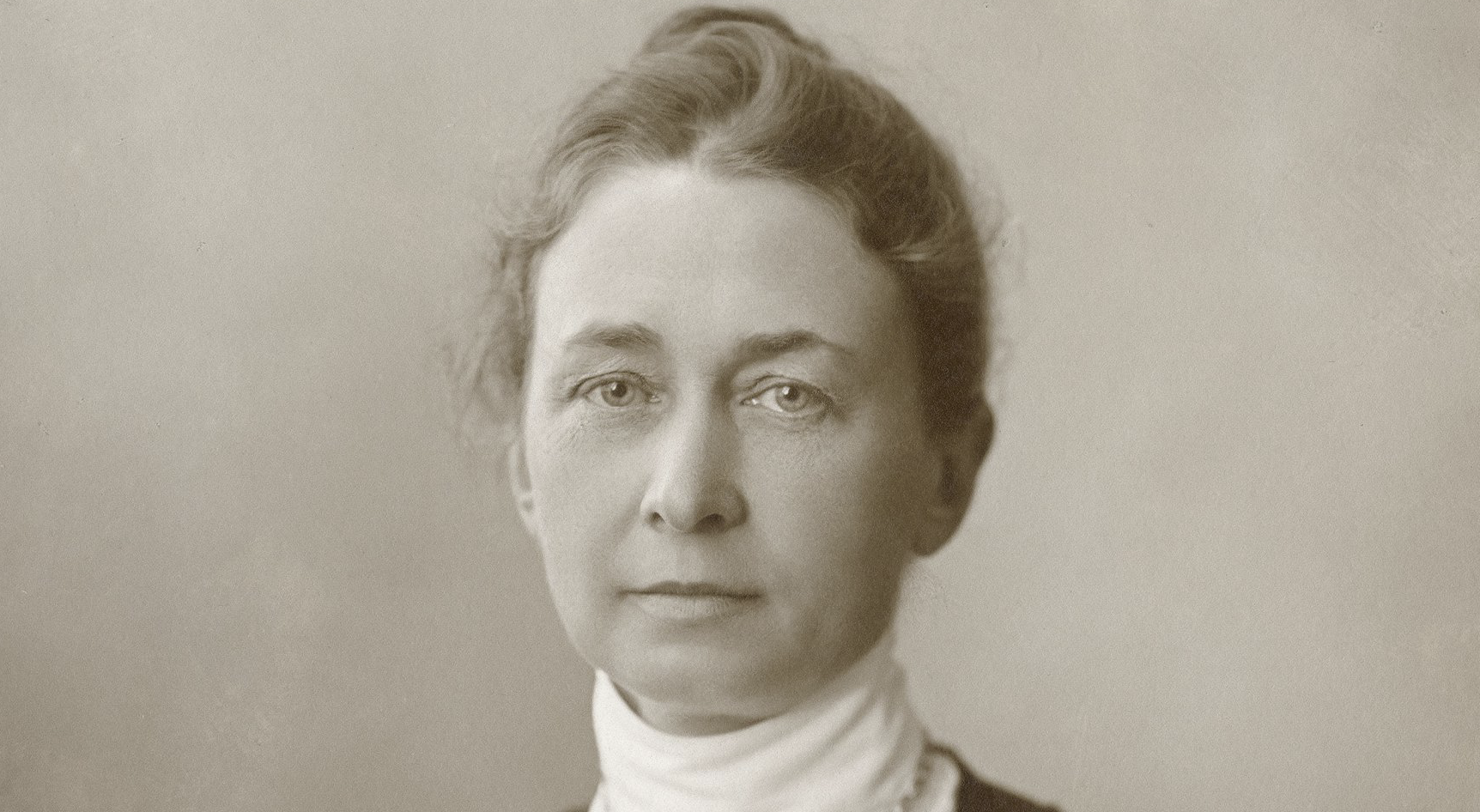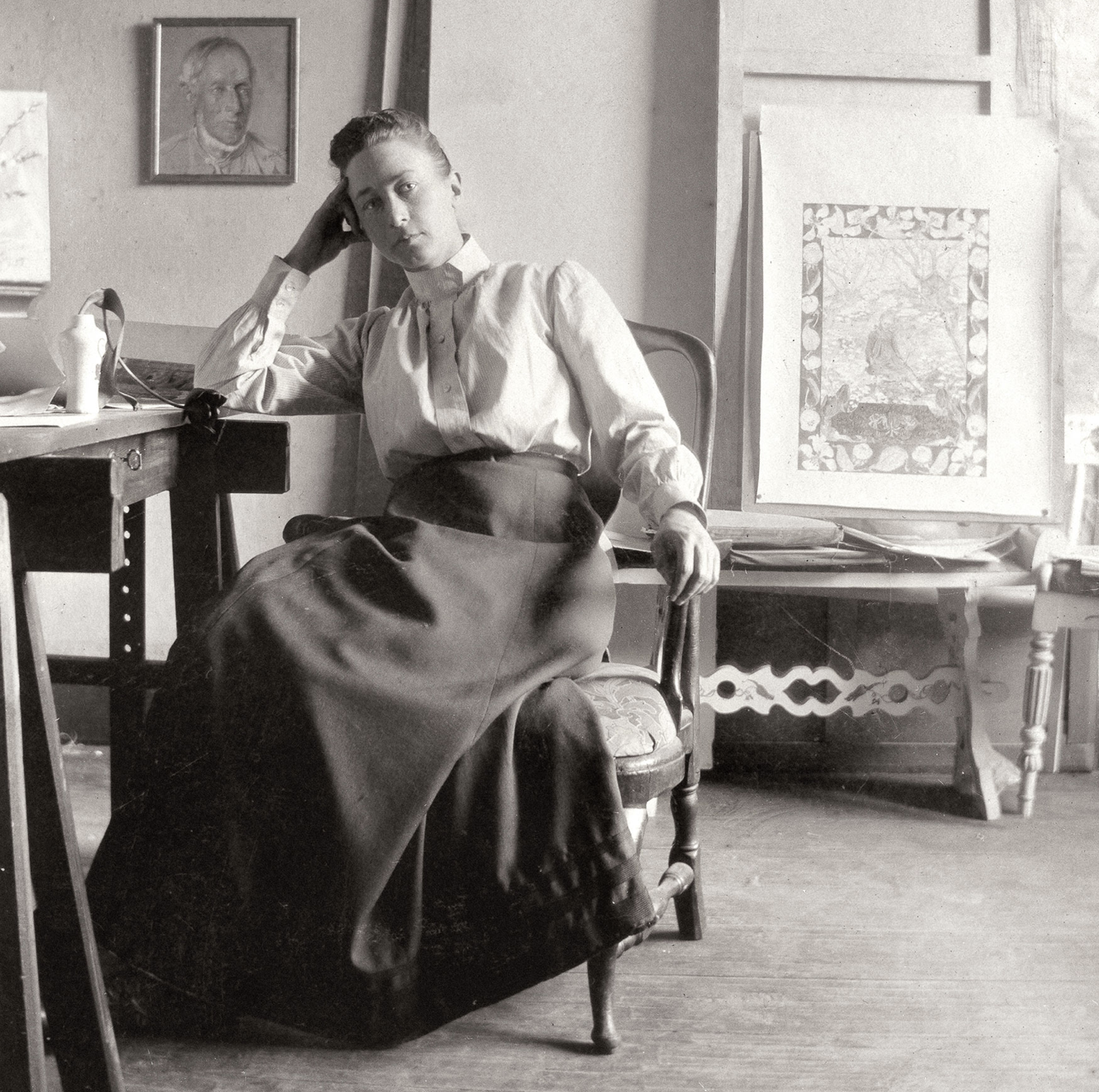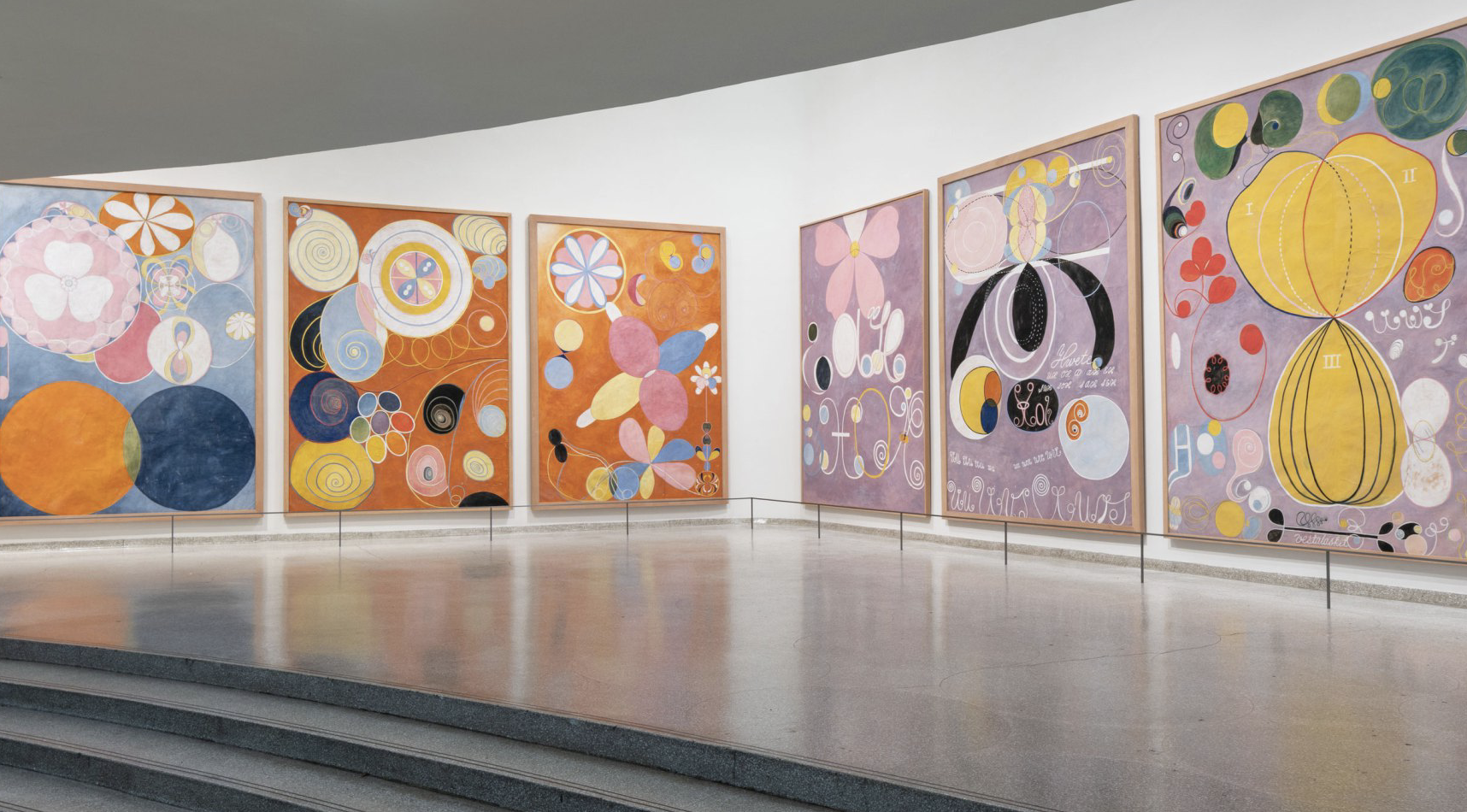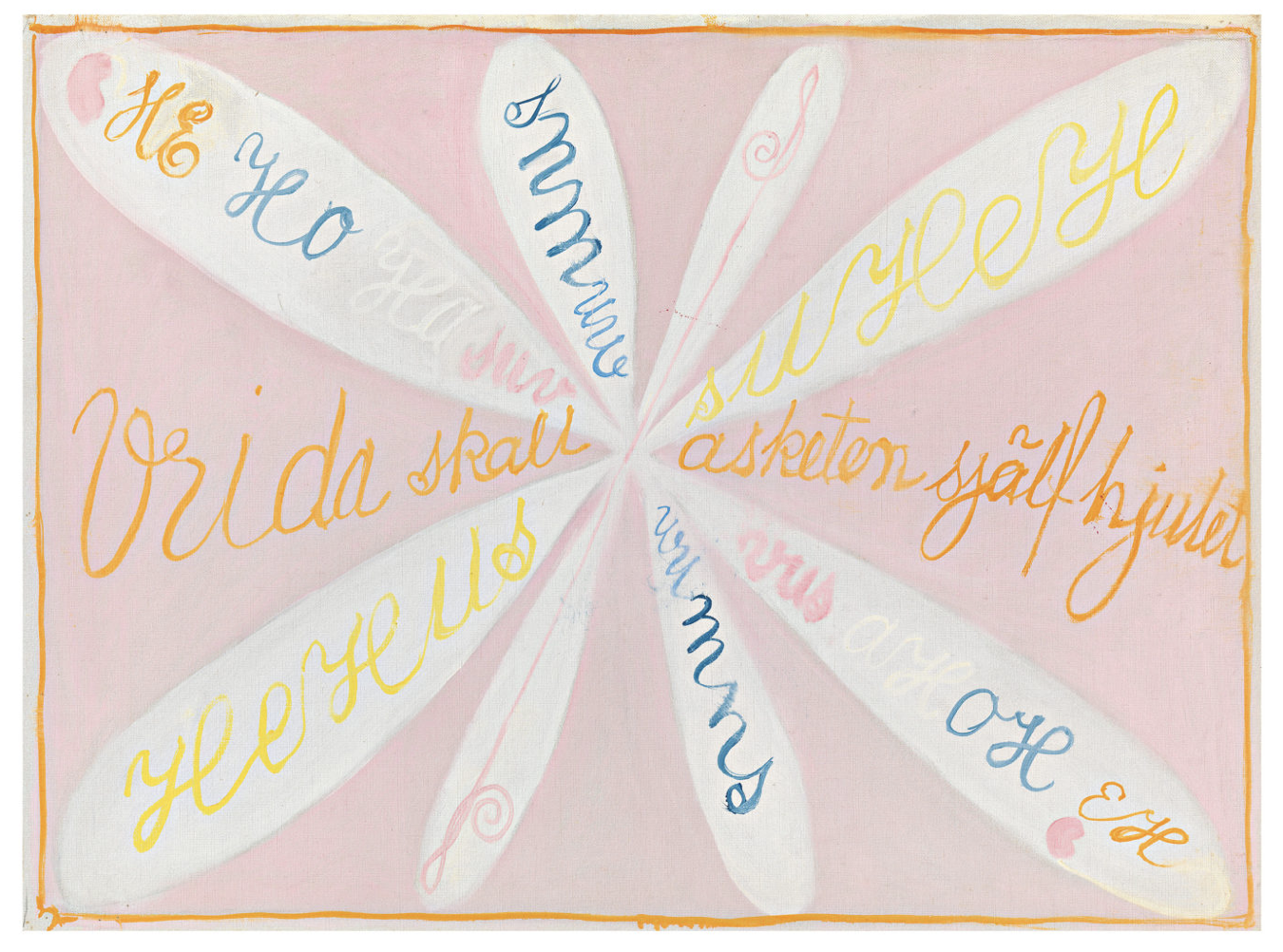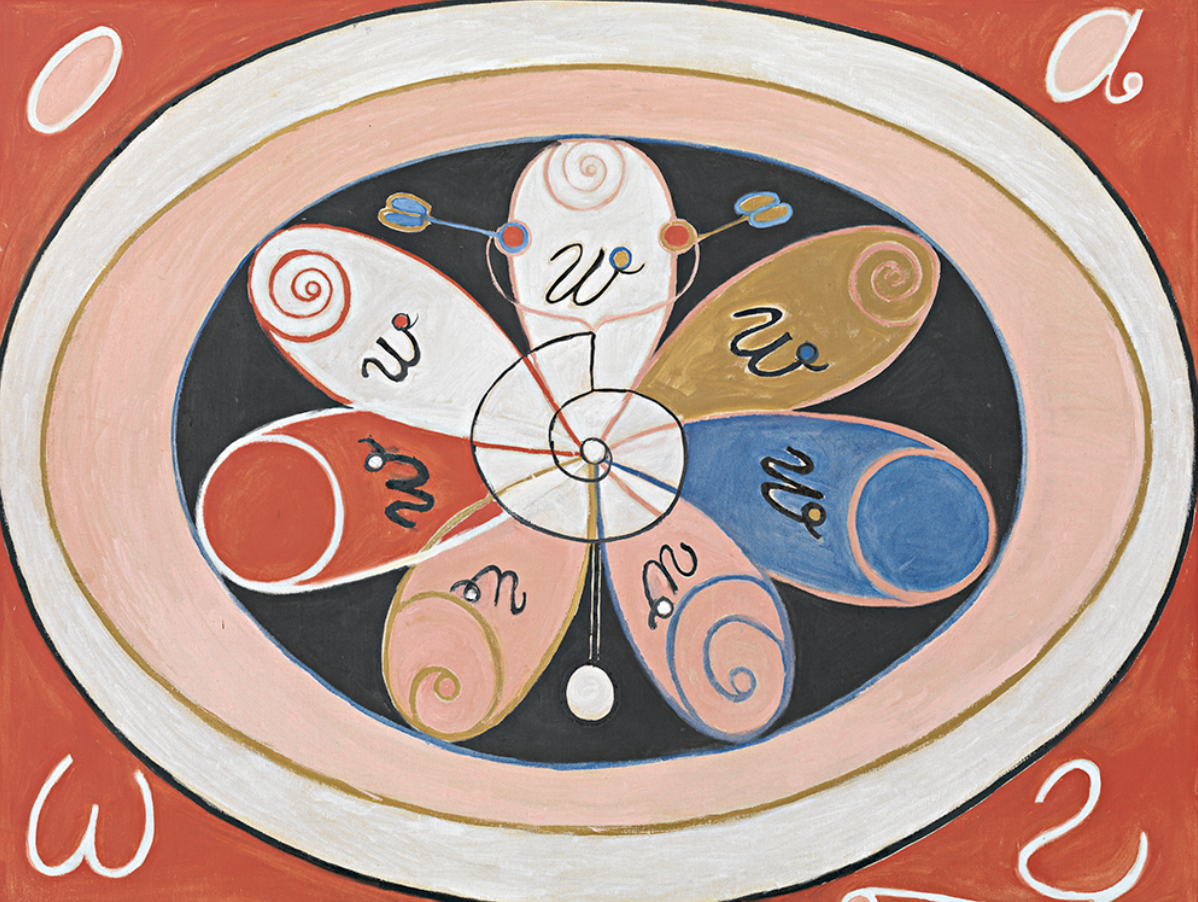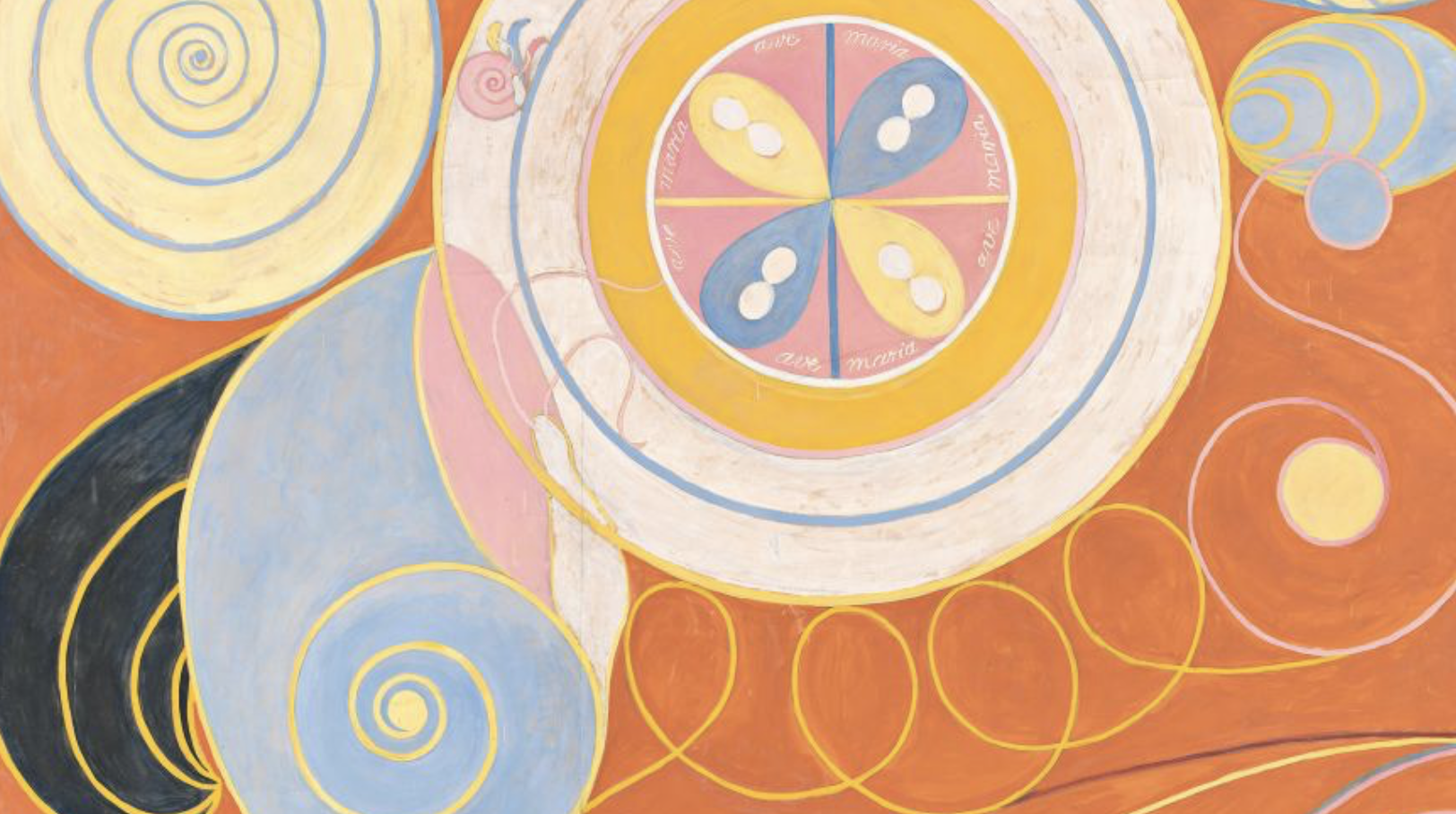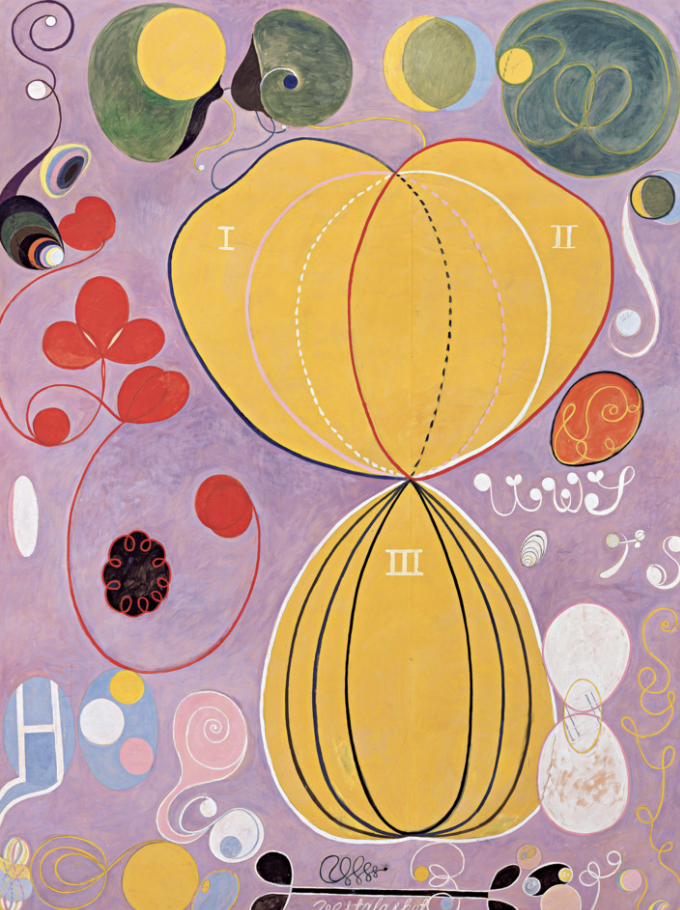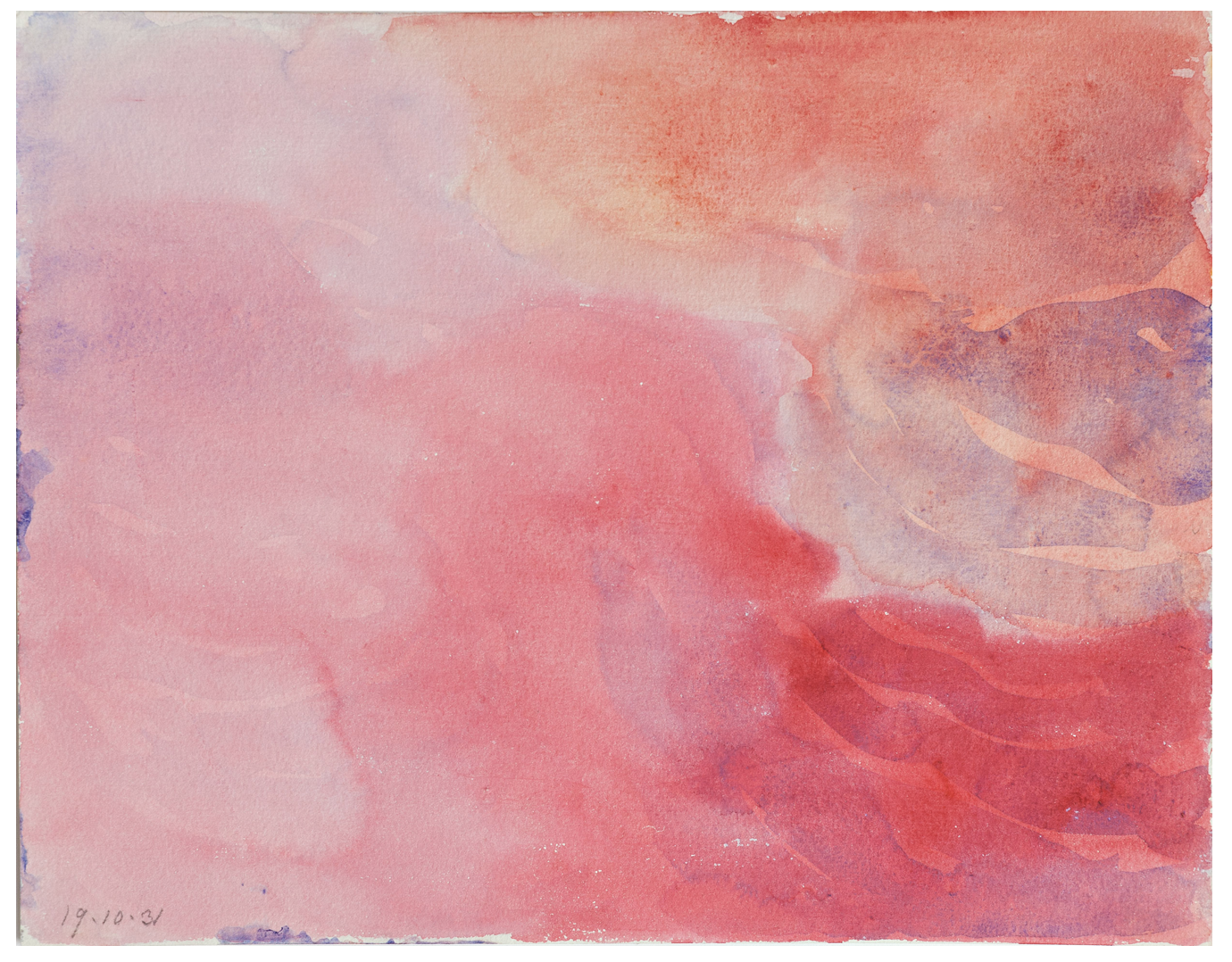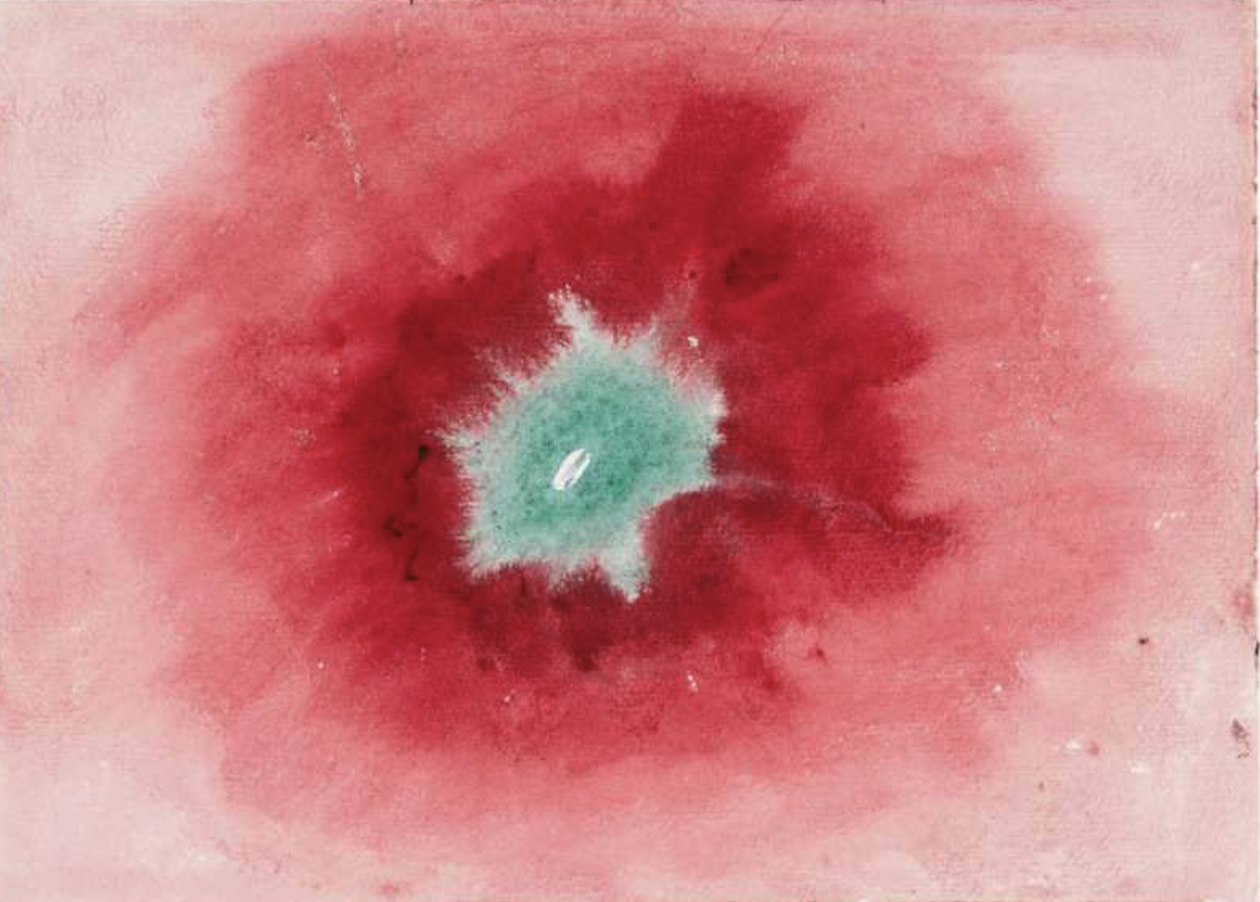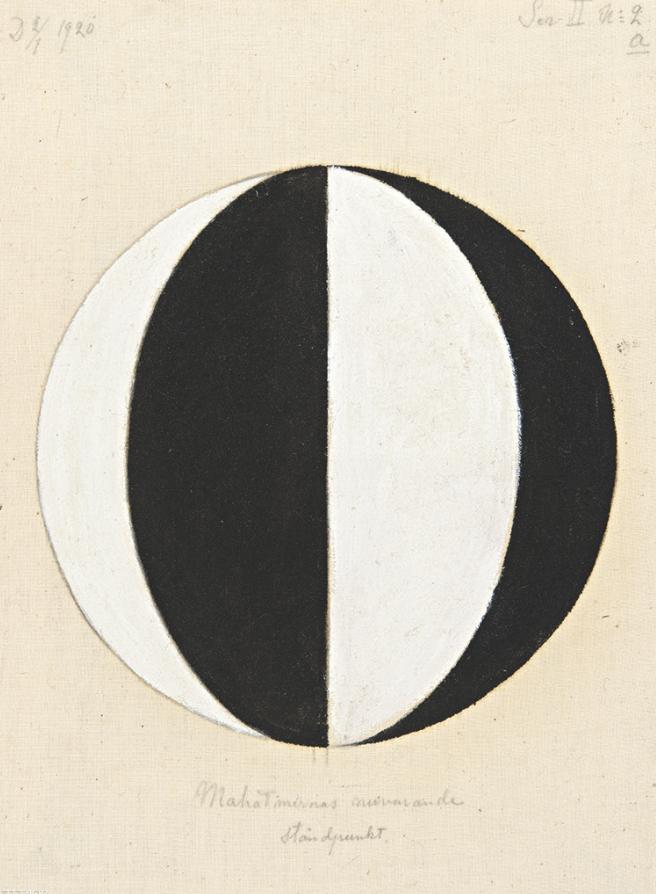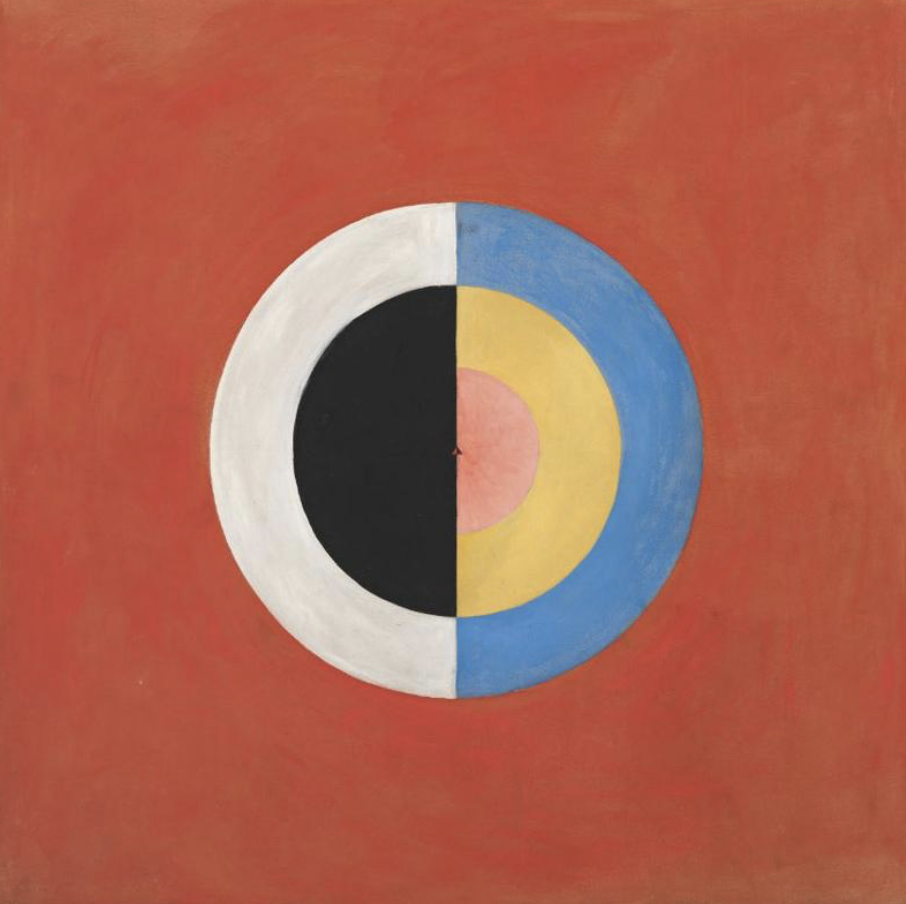Imagine a woman in the long skirts and high collar of the early 20th century standing in front of the painting she created. It is a massive piece—about 10 feet tall by 8 feet wide—and it is not a landscape, a portrait, a still life, nor a scene from myth or history. Dominating the composition is a bold yellow form reminiscent of a plant or sea creature, glowing amid colorful, biomorphic shapes and vigorous lines. This is just one of 10 such works that she has created almost entirely alone—sometimes walking on her work as she lays down the paint—and one of 193 radically abstract paintings that she has made in a few short years, between 1906 and 1915.
None of these details fit with the story told in museums and art history courses. We know the first abstract painters so well that we often refer to them by last names alone: Kandinsky, Malevich, Mondrian. We know who is celebrated for doing “action painting” on giant canvases laid on the floor—Pollock. Each of these men has been lauded for opening a way into new territory. As it turns out, that territory had already been explored by another artist. Her name was Hilma af Klint.


